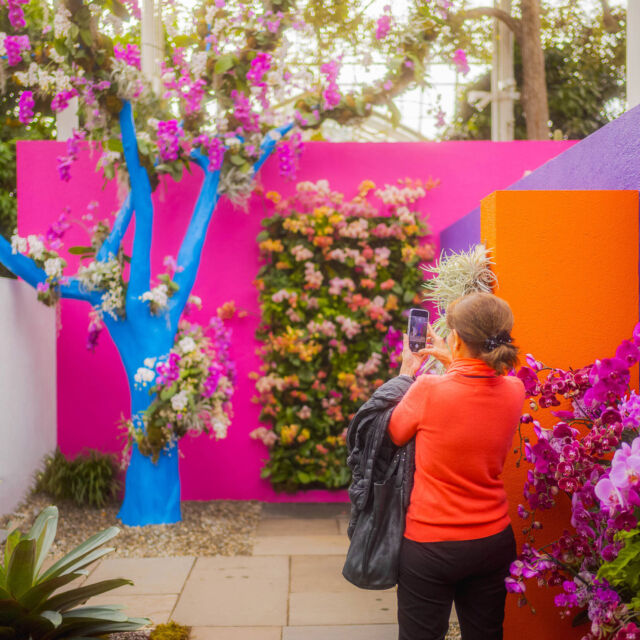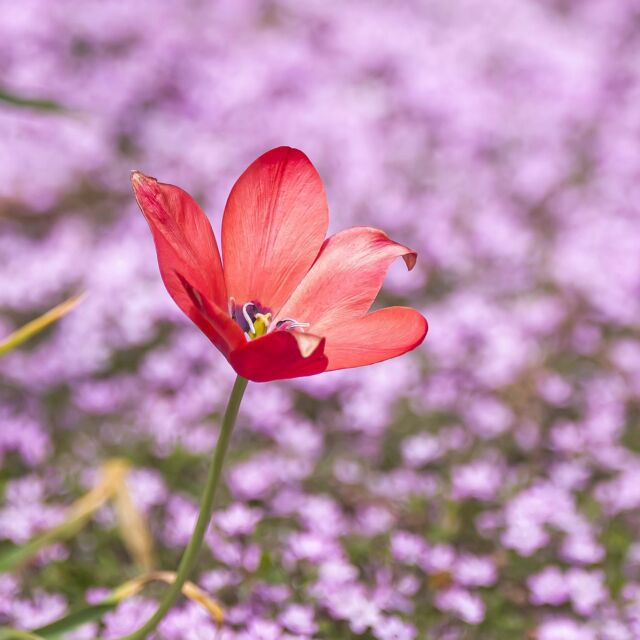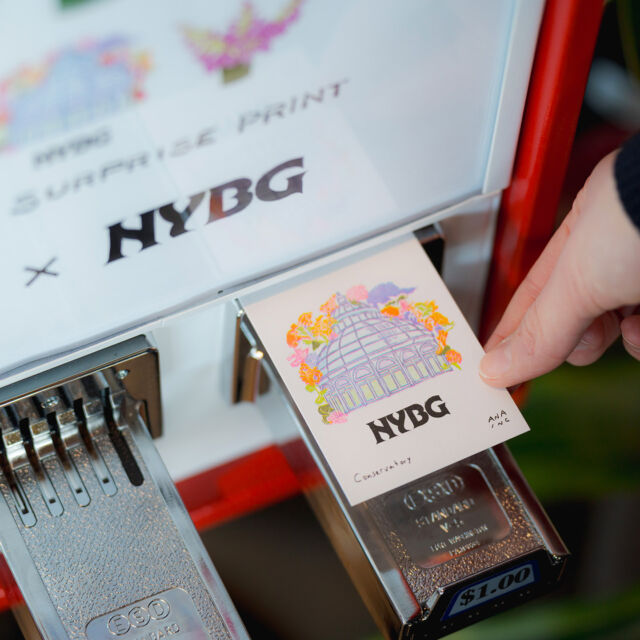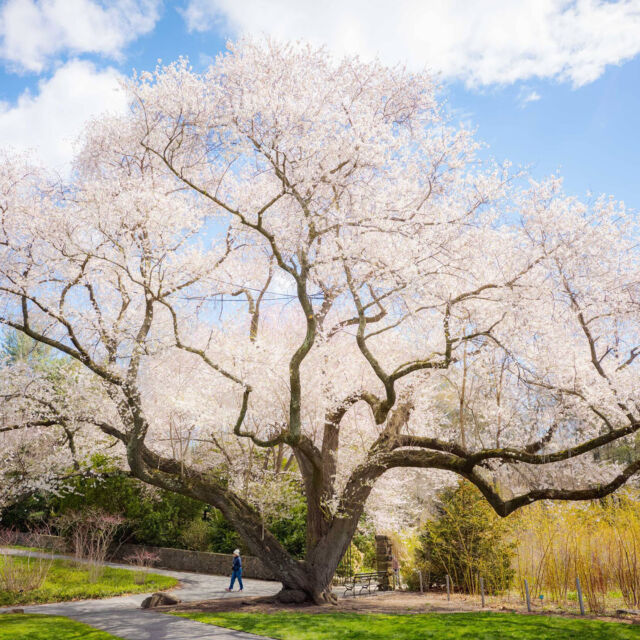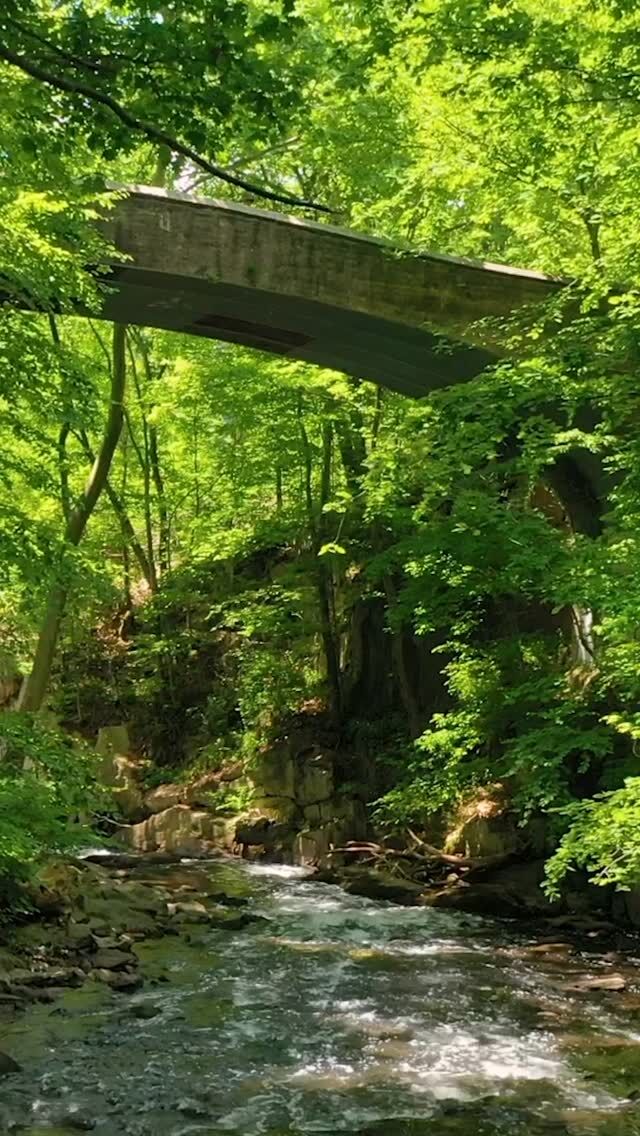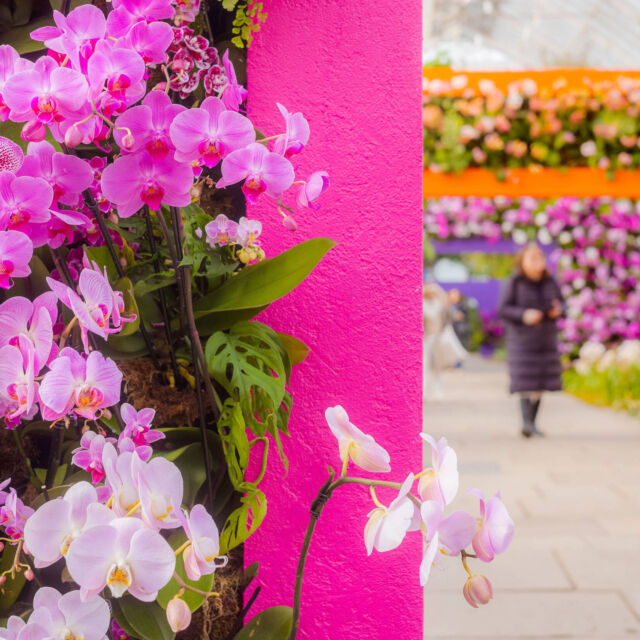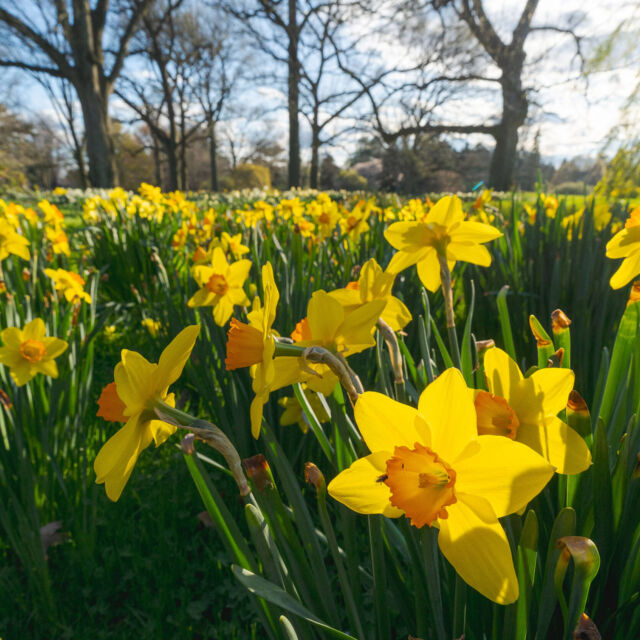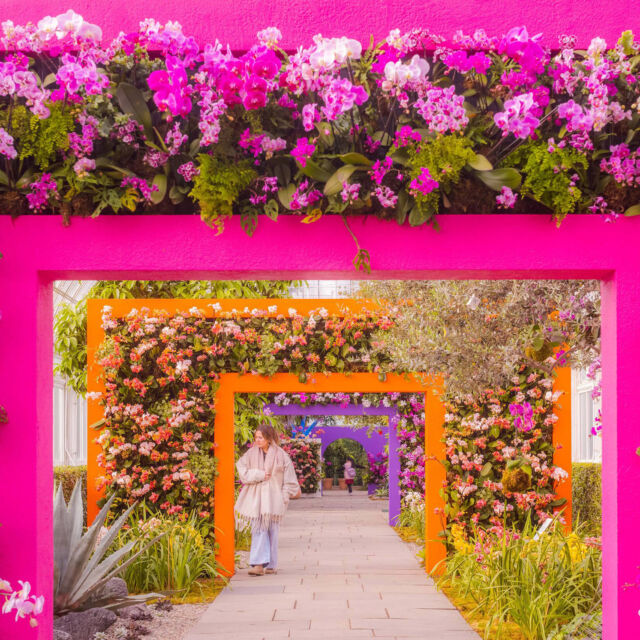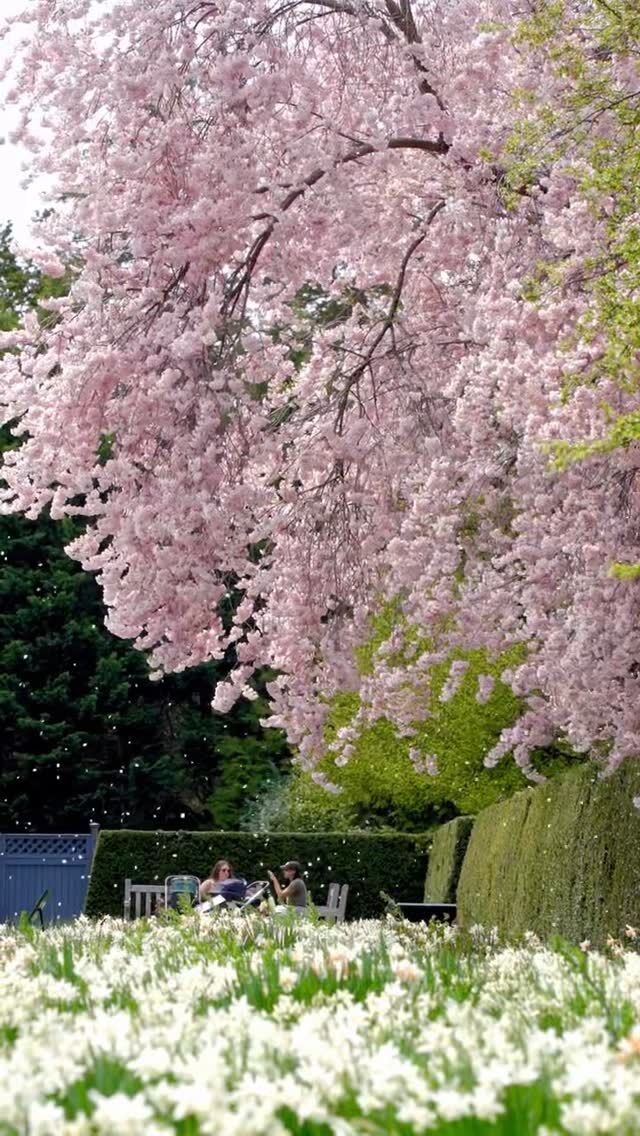Uncovering Historic Daffodils at The New York Botanical Garden
Claire Lyman is Assistant Curator of Outdoor Gardens at The New York Botanical Garden.
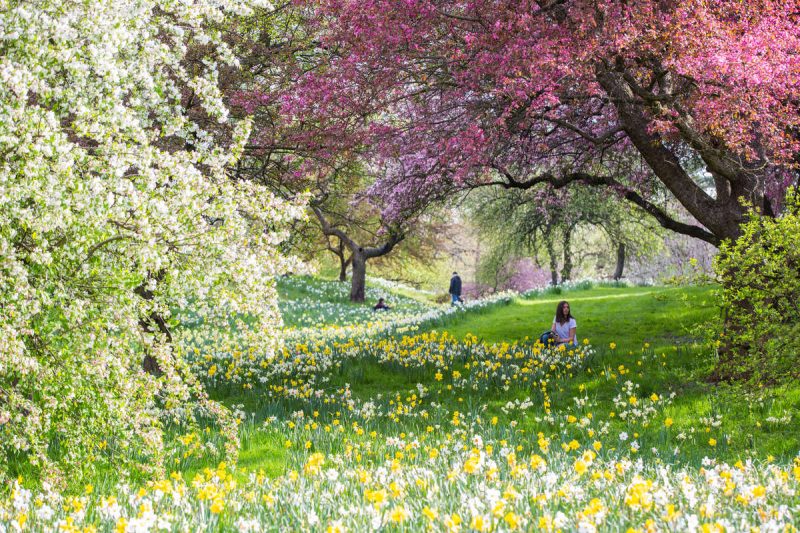
Daffodil Hill and the surrounding area in its contemporary spring bloom
The New York Botanical Garden’s daffodil collection was established in 1898 with a gift of about 52 varieties from British horticulturist Peter Barr (1826–1909), affectionately known as the “Daffodil King,” making it one of the Garden’s oldest collections. Barr was responsible for not only popularizing the daffodil in the horticulture industry, but he also created a classification system for future breeders, and truly set the stage for the massive increase in daffodil breeding in the 19th century. A gift from his personal collection was significant. In 1924 the collection grew exponentially with a naturalized planting across a sprawling hillside in the southern portion of the Garden, added under the supervision of Ethel Anson Peckham (1879–1965). She was later named NYBG’s Honorary Curator of Iris and Narcissus Collections, and Daffodil Hill would become a defining feature of the Garden, enchanting visitors every spring thereafter. Today, at nearly a century old, the collection boasts many of these legacy plantings as well as new varieties.
Daffodil Hill has been stewarded by many curators and horticulturists throughout its history, all whose unique tastes and preferences have helped shape the collection into what it is today.
A Project Emerges
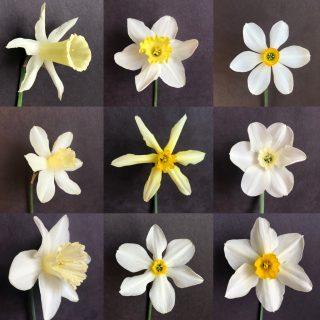
A sampling of unknown daffodils found growing at NYBG
While we celebrate the spectacle of this naturalized planting, it does come with some inherent management challenges. It can be very difficult to keep track of specific cultivars planted in this way over such a long period. Some daffodils die unnoticed and are replaced by other thriving neighbors, seedlings emerge, and any unwritten information about the collection is likely to be forgotten as the stewardship responsibilities pass from one hand to another over the decades.
In spring 2019, we set out to catalog the current Narcissus collection, as it became clear how little documentation existed for the historic daffodil plantings. Initial plans to create an informational pamphlet featuring approximately 30 known cultivars, predominantly modern varieties with a few known heirlooms, were scuttled as the scope of the documentation project revealed itself. That spring, over 130 unique daffodils were photographed. We had grossly underestimated how many heirloom daffodils remained alive and thriving.
The goal of this project was expanded to establish a thorough and exhaustive documentation of all Narcissus in the collection surrounding Daffodil Hill, as well as their locations. Photographs proved crucial in fueling our research efforts. So with the plan set to formally map and properly inventory the entire collection in spring 2020, the rest of 2019 was spent collecting any and all pieces of information to fill the gaps in our records.
Gathering Information
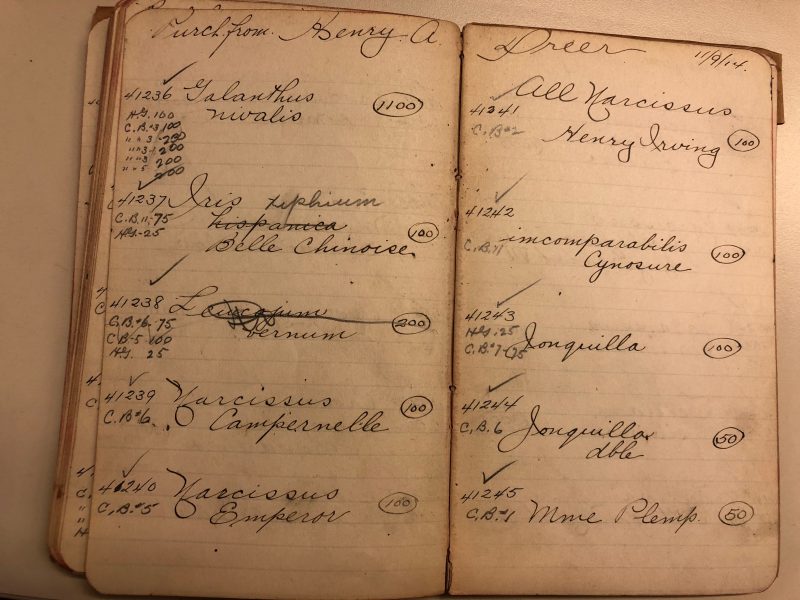
Accession log book #45
The first place we began was the accession log books, archived in the Garden’s LuEsther T. Mertz Library. Plants are given an accession number when added to the Garden’s collection, which makes them easier to track and manage. When NYBG made the transition from handwritten accession records to a digital database in 1990, many records didn’t make it into the database, particularly those of herbaceous plants. It took several months to pore through the old accession log books to decipher nearly a century of calligraphic handwriting looking for any mention of Narcissus, and enter those found into our current digital database. One hundred and fifty accession log books, and some serious eye strain later, it became clear that despite having found a whopping 250 Narcissus accessions we were still falling short on the information we needed.
Most of the daffodil accessions found in the log books were planted elsewhere on Garden grounds, indicating that most of what was planted around Daffodil Hill was never accessioned. A curator’s nightmare.
Luckily, due to the popularity of this collection in the 1920s, there were actually quite a few places to look, including publications such as The Journal of the New York Botanical Garden and Bulletin of the New York Botanical Garden, yearly planting reports, opinion pieces written by NYBG staff and peers, and historical photographs. We recorded every cultivar mentioned within these documents. The resulting list includes 376 daffodil cultivar mentions, 168 of which were stated to have been planted in the naturalized planting on Daffodil Hill. Of those 168 cultivars, 90 were unique cultivar names, most of which were not listed in the accession log books. Now we had an actual list of daffodils that were known to have been planted in the area surrounding Daffodil Hill.
Some Detective Work
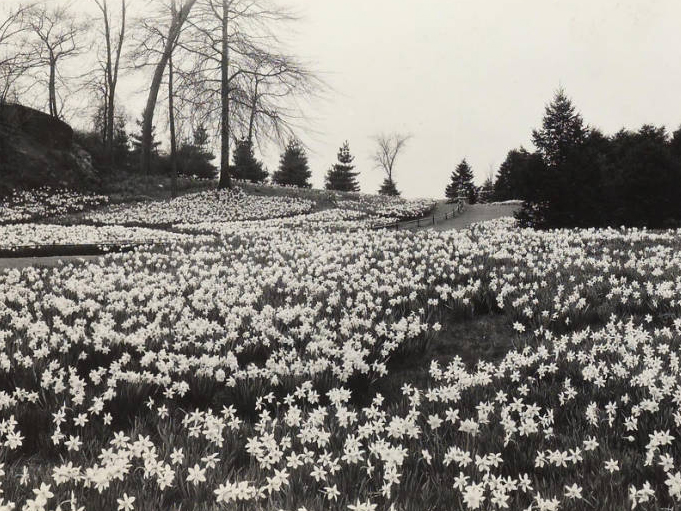
Daffodil Hill blooming in 1933
The next big find was discovering the nursery sources used in the foundational planting of Daffodil Hill in 1924. According to yearly planting reports, 10,000 daffodil bulbs were purchased and another 37,000 were gifted specifically for this planting. Thankfully, the Head Gardener at the time, Kenneth R. Boynton, B.S., mentioned the sources for these 47,000 bulbs in one issue of The Journal of the New York Botanical Garden.
The purchased bulbs were said to be from John Scheepers Inc., and Chester J. Hunt, who operated The Blue Book of Bulbs, while the gifted bulbs were said to be from the Dutch Bulb Exporters’ Association. We have yet to find information on the contents of the donation; however, just knowing these sources has helped to narrow things down substantially. The purchased bulbs came from only two sources, the catalogs of which were tricky to find in public archives. We found catalogs in public archives of the years surrounding the big purchase of 1924 but not of the actual year in question. However, there were very few differences in offerings in these catalogs, which allowed us to paint a fairly accurate picture of which cultivars were likely purchased. After researching some of these catalog names, we were able to place a potential provenance for daffodils with previously questionable or unsupported sources. Daffodils still growing, or suspected to still be growing, around Daffodil Hill that were likely purchased for the initial 1924 planting include: ‘St. Olaf’, ‘Edrin’, ‘Will Scarlett’, ‘Ornatus’, ‘Actaea’, ‘Conspicuus’, ‘White Lady’, ‘Queen of the North’, ‘Sir Watkin’, ‘Emperor’, ‘Empress’, ‘Lucifer’, ‘Peter Barr’, ‘Lady Godiva’ (aka ‘Barbara Holmes’), and ‘Albatross’.
Another substantial gift of daffodil bulbs came in 1930, according to a Bulletin of the New York Botanical Garden of that year, by John Casper Wister from his own personal collection. Apparently, these bulbs were not labelled for display to avoid the risk of theft because they were considered to be rare and valuable. Consistent with the rest of the planting, they were also omitted from the accession logs. As these came from his personal collection, we suspect there may be some illuminating information about what daffodils he gifted in his own personal records, which are available at Connelly Library at La Salle University in Philadelphia, PA, where they await further sleuthing.
The Search Continues
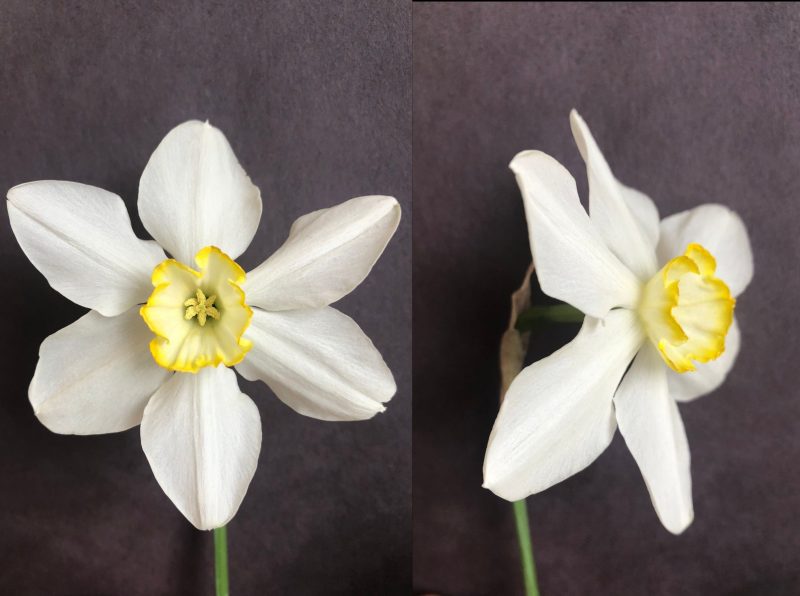
Figure 1. 3W-WWY
Unfortunately, we couldn’t go forward with the inventory and mapping of the collection as planned for spring 2020, due to the Garden’s temporary closure during the COVID-19 shutdown. Instead we doubled down on our cultivar identification attempts, and have managed to positively identify 14 heirloom cultivars, with another five to ten tentatively identified. While it’s very exciting to match flower faces to their names, the reality of working with such a historic collection is that, inevitably, there will be some daffodils whose names we may never learn.
The cultivar identification process is complicated and requires cross analysis of as many different source materials as possible. A number of resources were utilized for the “putting names to faces” part of the project, including: websites such as daffseek.org and dafflibrary.org, The Journal of the New York Botanical Garden, Bulletin of the New York Botanical Garden, yearly planting reports, opinion pieces written by NYBG staff on daffodil trends, historical photographs, historical bulb catalogs, historical articles from publications such as The Garden Magazine, American Daffodil Yearbooks, and other documents from public and NYBG archives. Digital archives have been immensely helpful, especially those that perform keyword searches, metadata searches, and text content searches. Utilizing these search methods, we have been able to find many historical pictures, illustrations, and descriptions of lesser-known daffodils. Another wonderful resource has been all of the great minds from the Historic Daffodil listserv, whom have shared professional insights, perspectives, and resources.
The easiest daffodil cultivars we’ve been able to identify are those varieties that left a massive impression in the bulb industry and therefore have left behind an abundant trail of photos, descriptions in bulbs catalogs, illustrations, discussions, and more, not to mention the most ubiquitous varieties typically still found in cultivation. In NYBG’s collection some of the most obvious heirlooms are ‘Will Scarlett’, ‘Conspicuus’, ‘Sir Watkin’, ‘Emperor’, and ‘Firebrand’. Unfortunately, for many of the less-popular varieties there is limited historical documentation. So when we encounter daffodils such as the unknown cultivar in Figure 1, there are a couple of cultivar name contenders in consideration for this daffodil: ‘St. Ilario’ and ‘Maid of Athens’. Both have nearly identical physical descriptions, so it’s safe to say, without any further supporting evidence, we probably won’t be able to claim with any level of confidence that we know its true identity.
Next Steps
There is still quite a bit of work to do in completing the documentation and identification of this collection. We hope to see the mapping project and full inventory go forward next spring, along with additional photo documentation. Further knowledge of this collection better positions us—and future stewards—to thoughtfully curate and manage this beautiful and historic collection. As part of this project we have added many cultivar descriptions and profiles to our publicly accessible online database, and, eventually we hope to provide information for all of the daffodils in the Garden’s collection. You can view our progress here.
SUBSCRIBE
Enter your email address to subscribe to this blog and receive updates on new posts.
